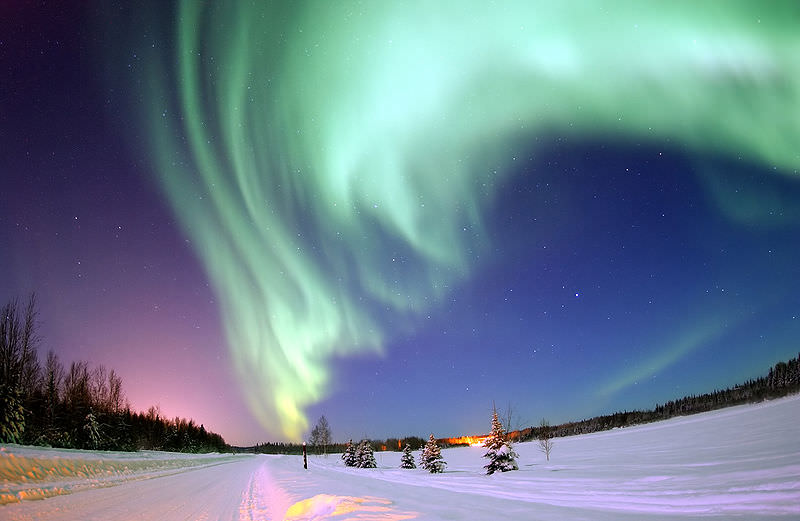

Image: Wikimedia Commons
[/caption]
Sky watchers observing from high latitude areas may be in for a treat tonight. Forecasters from the National Oceanic and Atmospheric Administration have predicted a 30-35% chance of geo-magnetic storm activity during the late hours of February 14-15. Activity could reach as far south as Michigan, Minnesota, and Wisconsin. The source of this potential light show is a solar wind stream flowing energetically from a coronal hole on the Sun. If you’re lucky, the night sky where you live could look like this for Valentine’s Day night.

Coronal holes are darker, colder areas of the Sun’s corona that have lower-density plasma than elsewhere in the Sun’s outer atmosphere. Coronal holes are areas where the fast-moving component of the solar wind is known to pass through as it escapes into space.
When energy from the Sun interacts with the Earth’s outer atmosphere, it excites oxygen and nitrogen molecules some 100 and 400km above the surface, respectively, emitting a green (oxygen) or red (nitrogen) glow. This in turn excites observers on the ground, who may see the auroral dance take on any of several characteristic forms.
There may just be a glow to the north (or south if you live in the southern hemisphere), just over the horizon; or you may see arcs or bands of light, sometimes with vertical rays spiking high into the night sky. During strong events you may witness the famous curtain effect, or the coronal effect where all the rays appear to converge almost directly overhead.
So if the sky is clear tonight, take your Valentine outside, find a place to snuggle up and you may be rewarded with a light show you can share and remember for years to come.
Could a new, fifth force of nature provide some answers to our biggest questions about…
In 2015, the United Nations adopted the 2030 Agenda for Sustainable Development—the Sustainable Development Goals…
Astronomers have been battling threats to their clear skies on all fronts lately. One of…
If you were Captain of the first USS Enterprise, where would you go!? Humanity is…
Now is the best time to observe Mars in 2025. Mars from 2014. Credit: Paul…
Scheduled for launch in 2027, the Nancy Grace Roman Telescope is slowly being readied for…